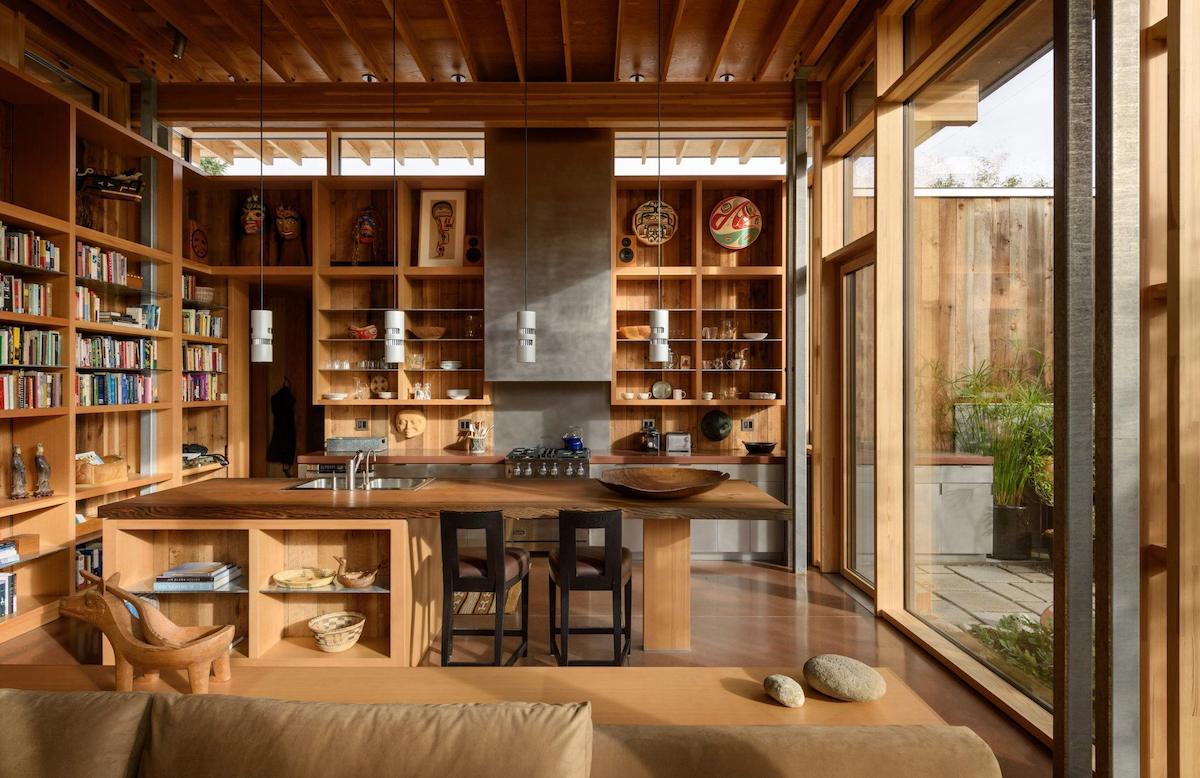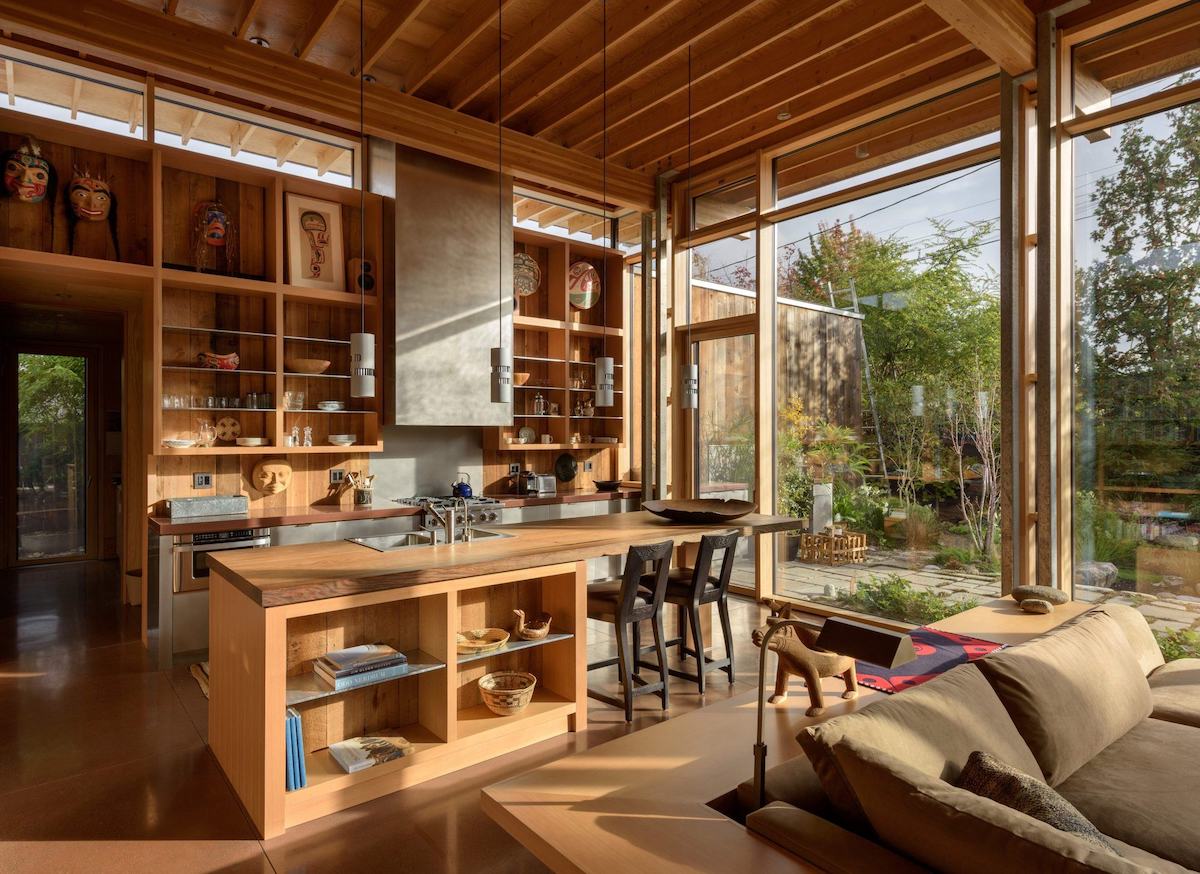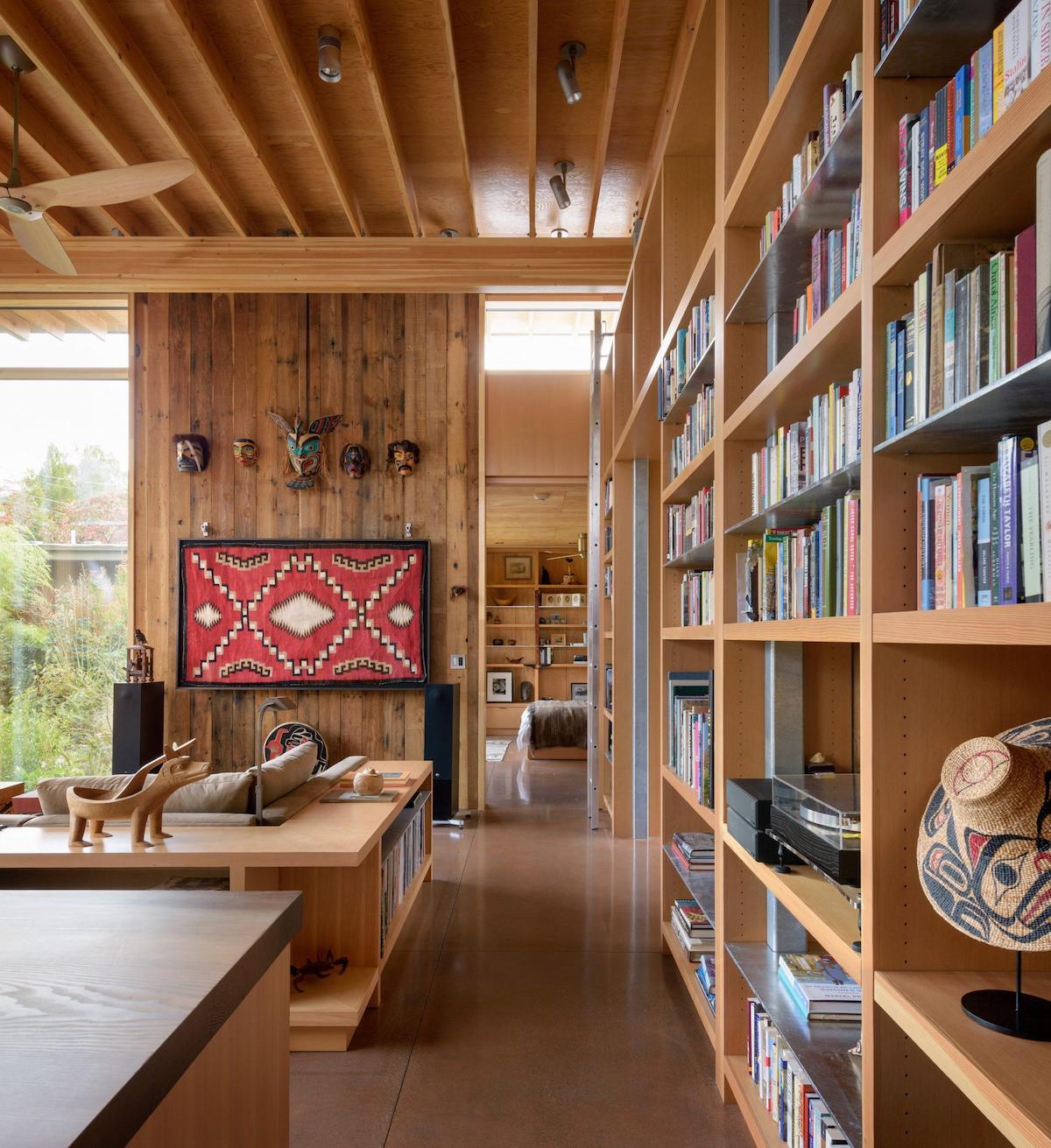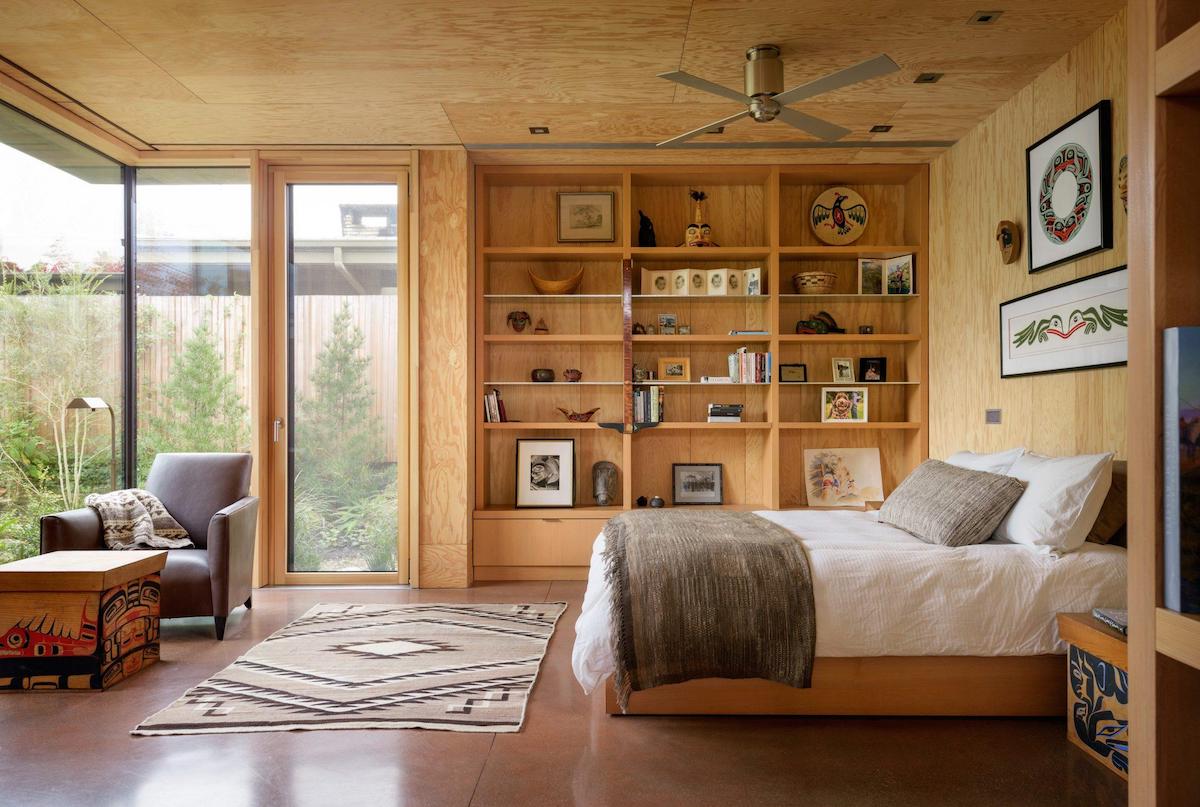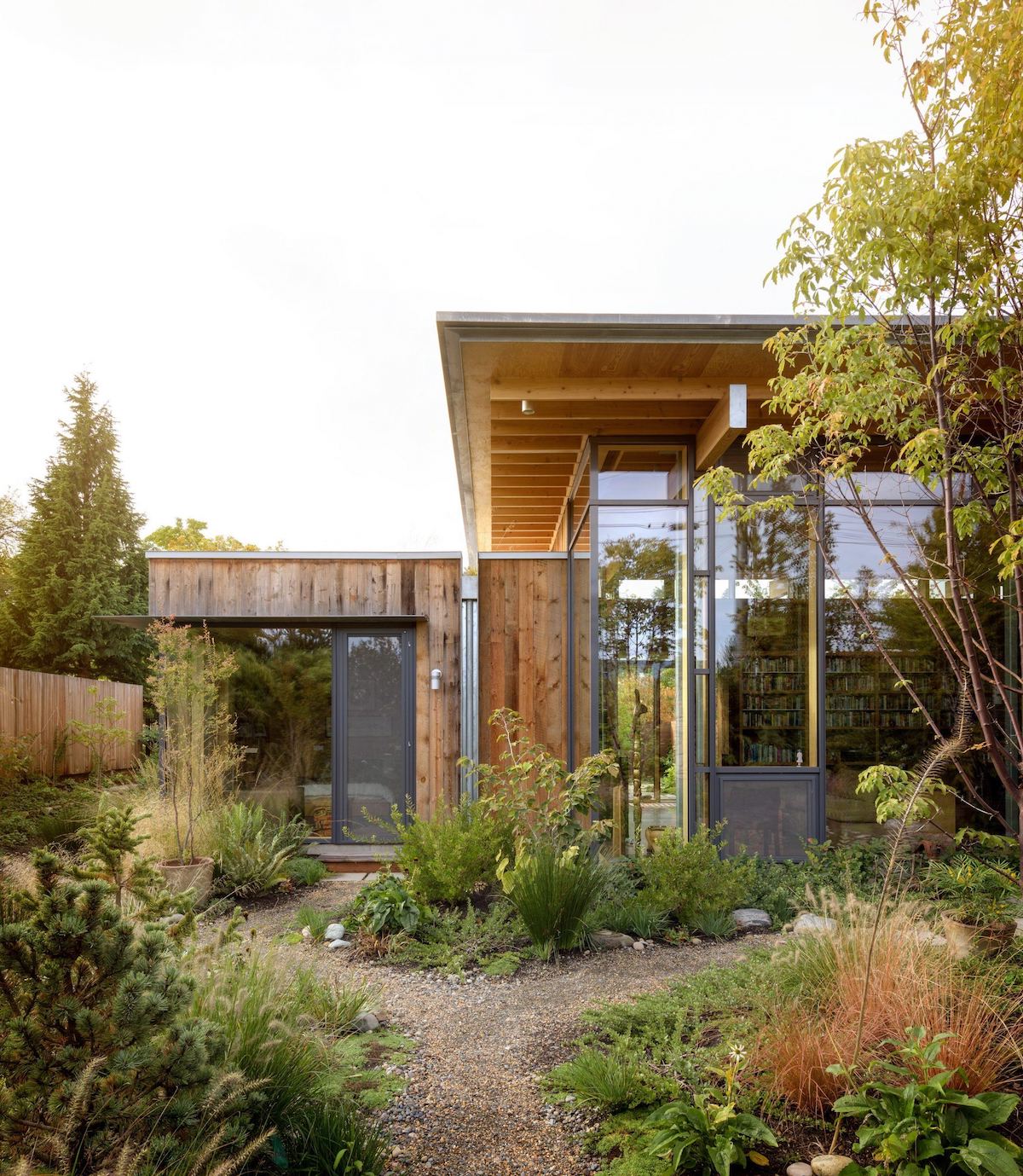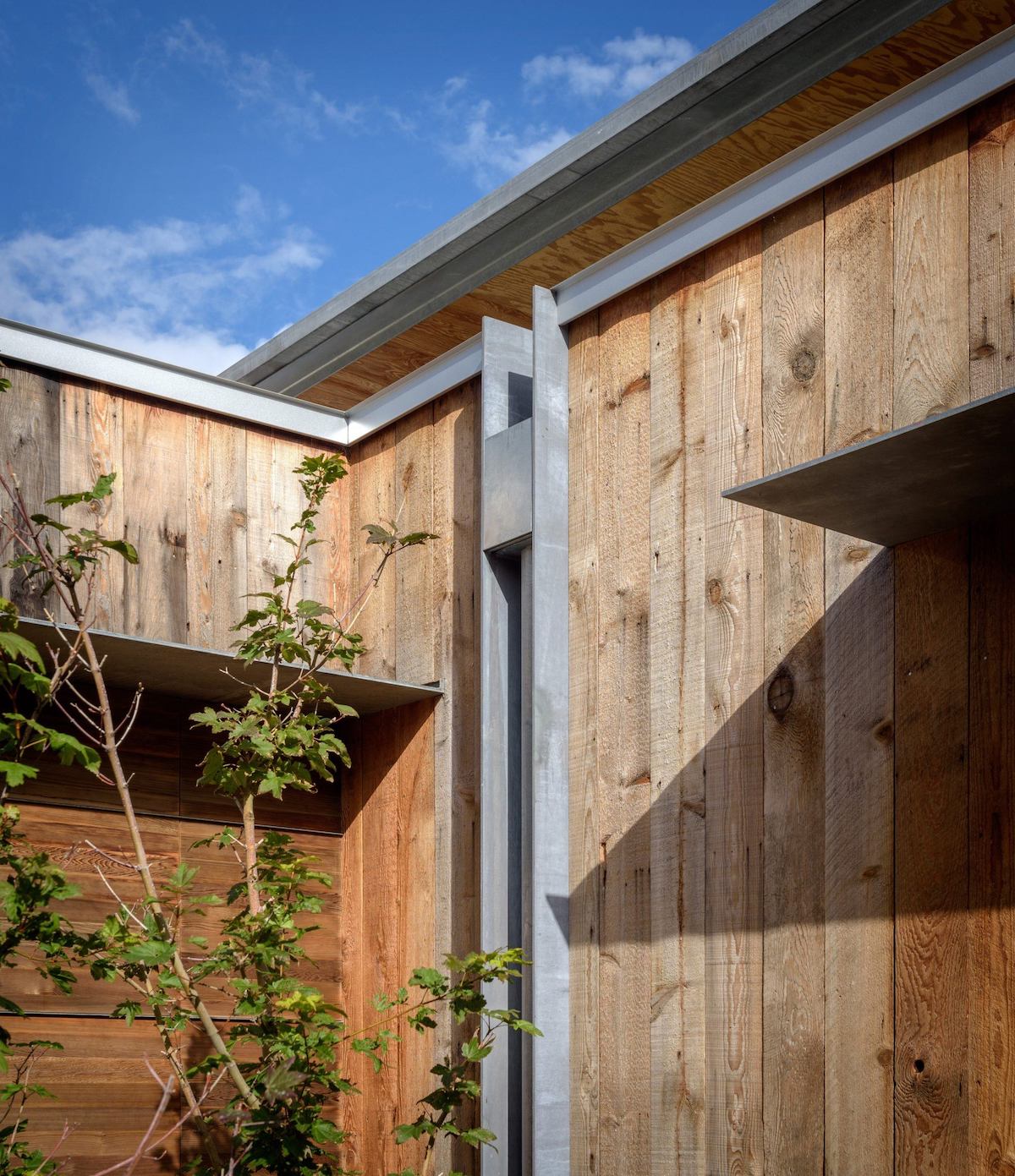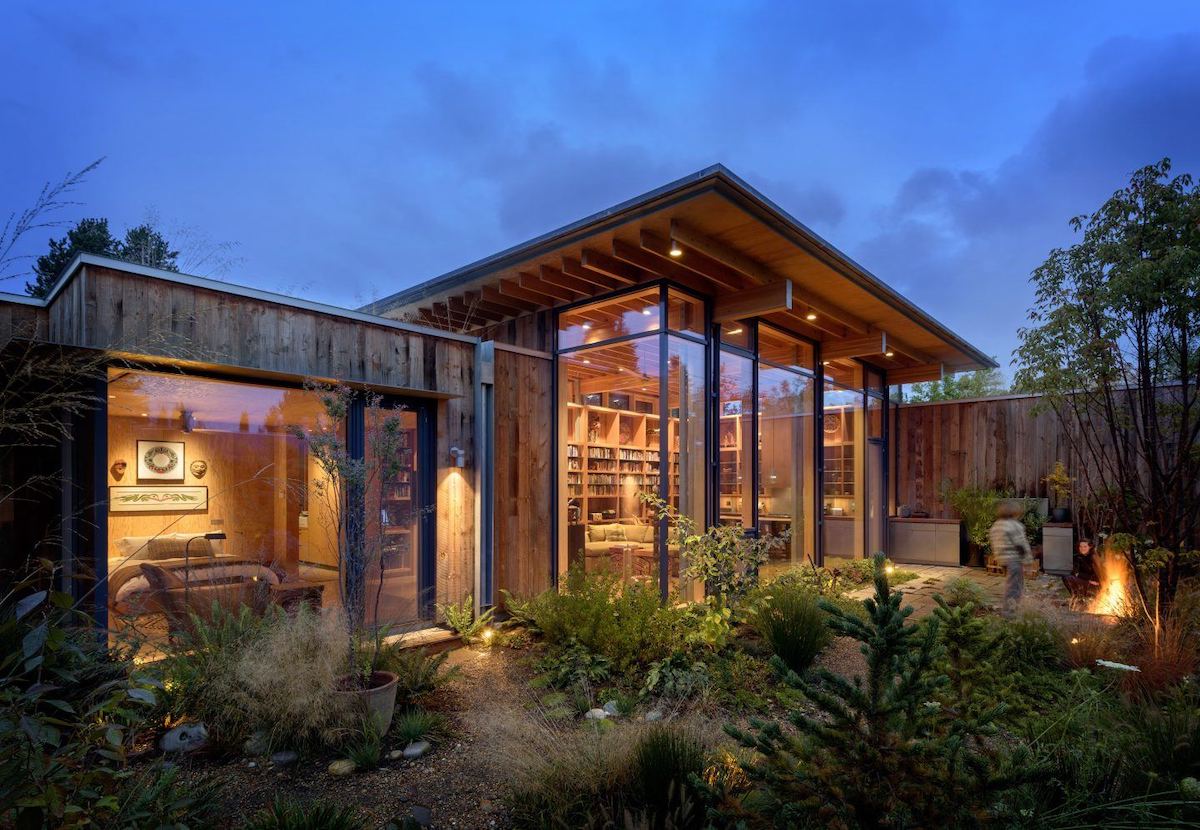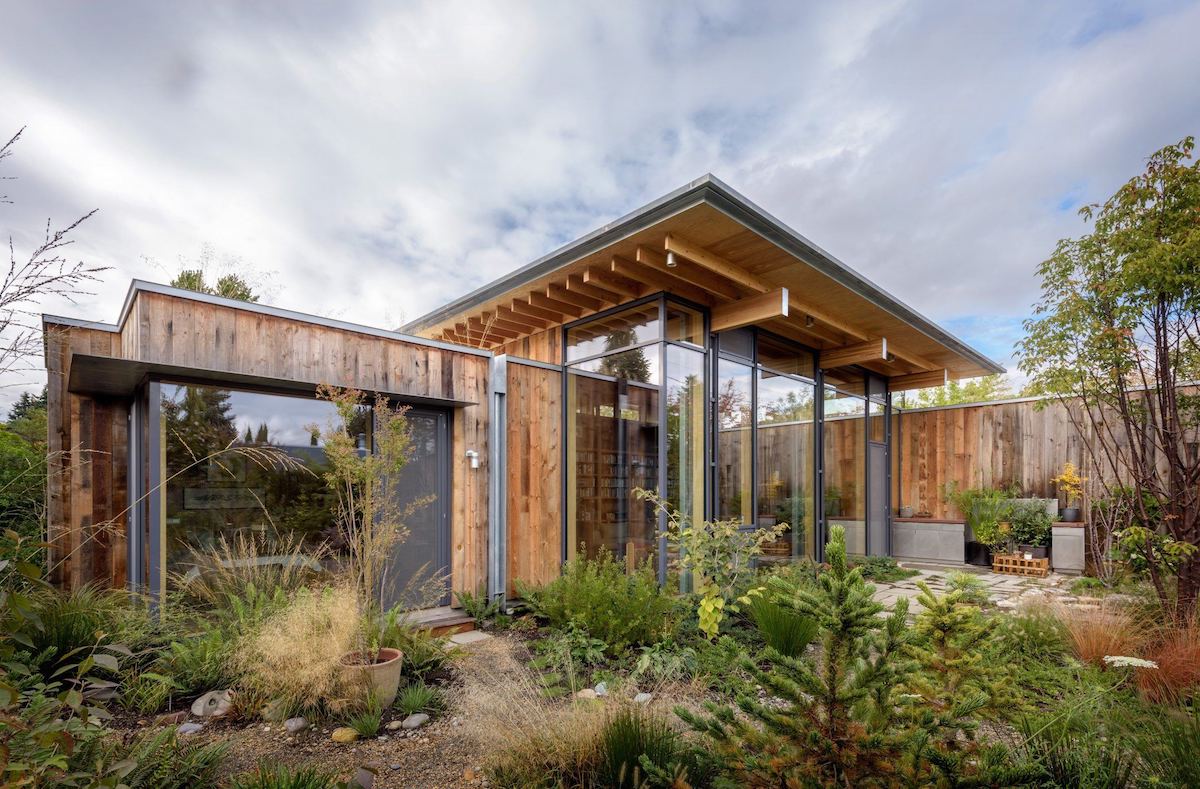
Do you love the city but hate feeling disconnected from nature? One conservationist in Seattle got the best of both worlds when she commissioned Olson Kundig to design her home. The resulting City Cabin is a single-family property that looks more like a home in a remote forest than in a metropolitan neighborhood.
Jim Olson, the principal of the architecture firm, explained that the client “wanted to feel like she was living in the wilderness, when, in fact, her home is on a regular-sized urban neighborhood lot.” With wood interiors as well as beautiful wild landscapes, the home seems to perfectly meet these high expectations. In images taken by architectural photographer Aaron Leitz, one can hardly see the neighboring properties or streets past the high fence that keeps the home secluded.
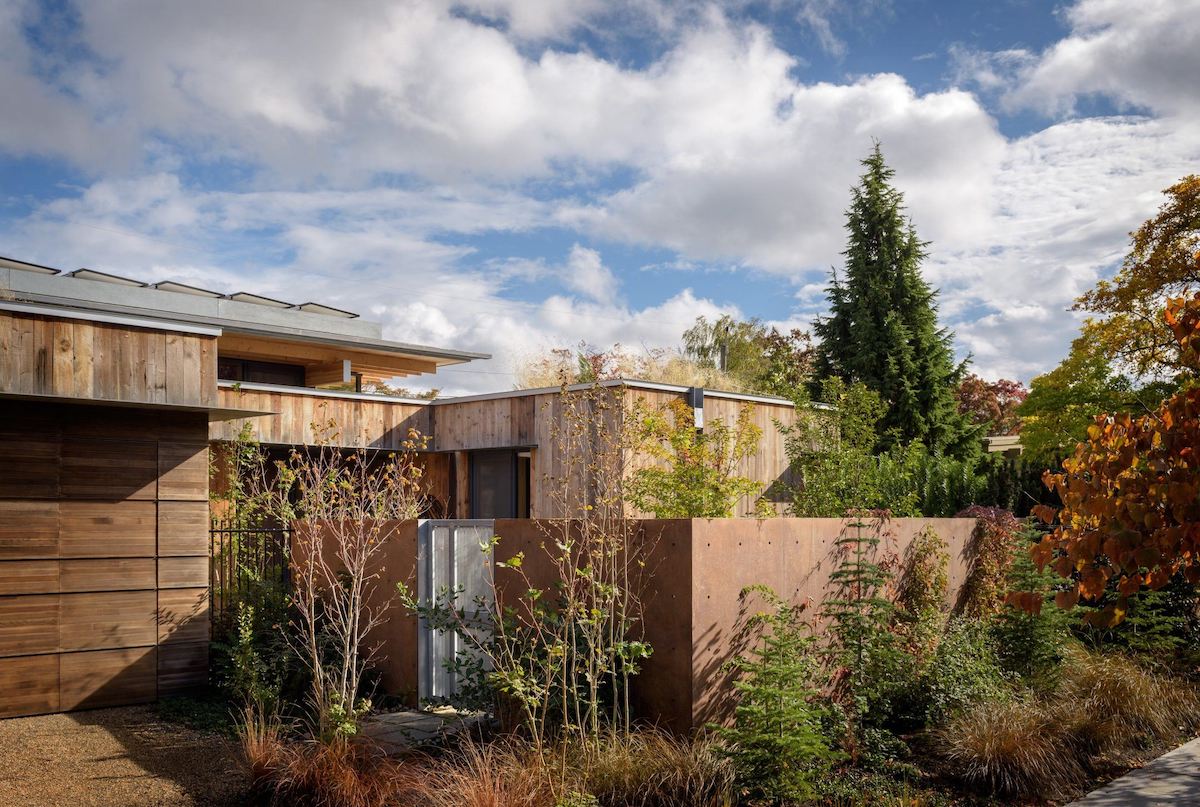
The environmental theme is not only an aesthetic decision in City Cabin. The home is also designed to run on net-zero energy—meaning that it can produce as much energy as it uses. Solar panels and an air-to-water heat pump help achieve these goals by offsetting energy, and reclaimed materials were used to diminish the property’s carbon footprint. The garden is also an important sustainability feature since it includes large trees and wild plants that form a new natural habitat in the urban lot.
Olson Kundig explains that the interior palette “draws inspiration from the client’s extensive Native American art collection, creating a true Northwest getaway nestled in the heart of the city.” All other interior materials—such as the untreated plywood and red-tinted concrete floors—were chosen to match this natural and warm aesthetic. The limited use of color also allows the natural world outside to act as the main focus of the home and the floor-to-ceiling window helps emphasize the garden.
The home’s organization, which uses the central public space to split the owner and guest areas, is designed to maximize transparency. The resulting 16-foot tall middle volume allows optimal light and solar gain, but it most importantly helps to blur the line between interior and exterior. In this way, the client is completely immersed in her “tiny new forest” in the heart of Seattle.
City Cabin is a single-family property designed as a wilderness retreat in a Seattle neighborhood.
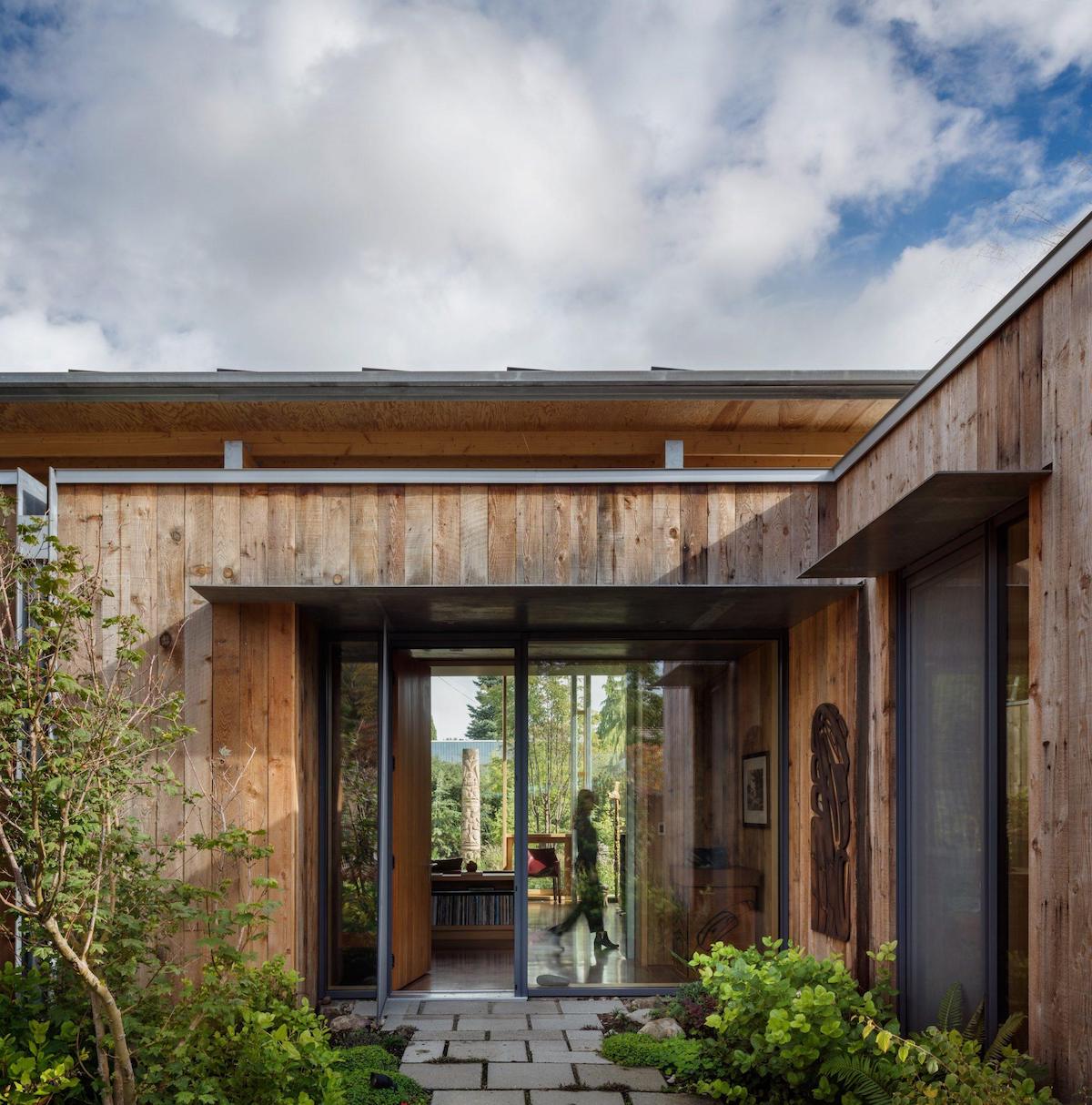
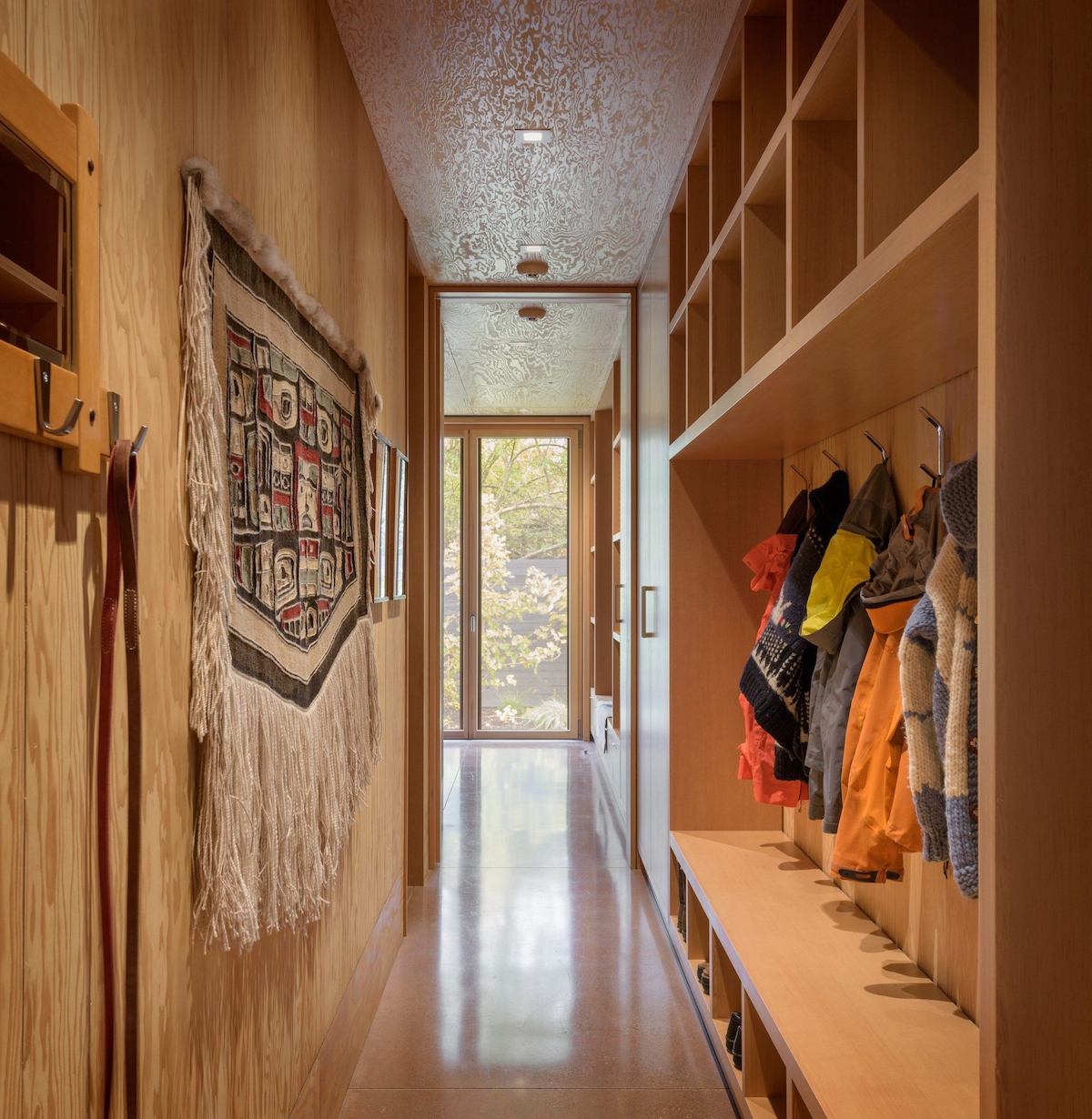

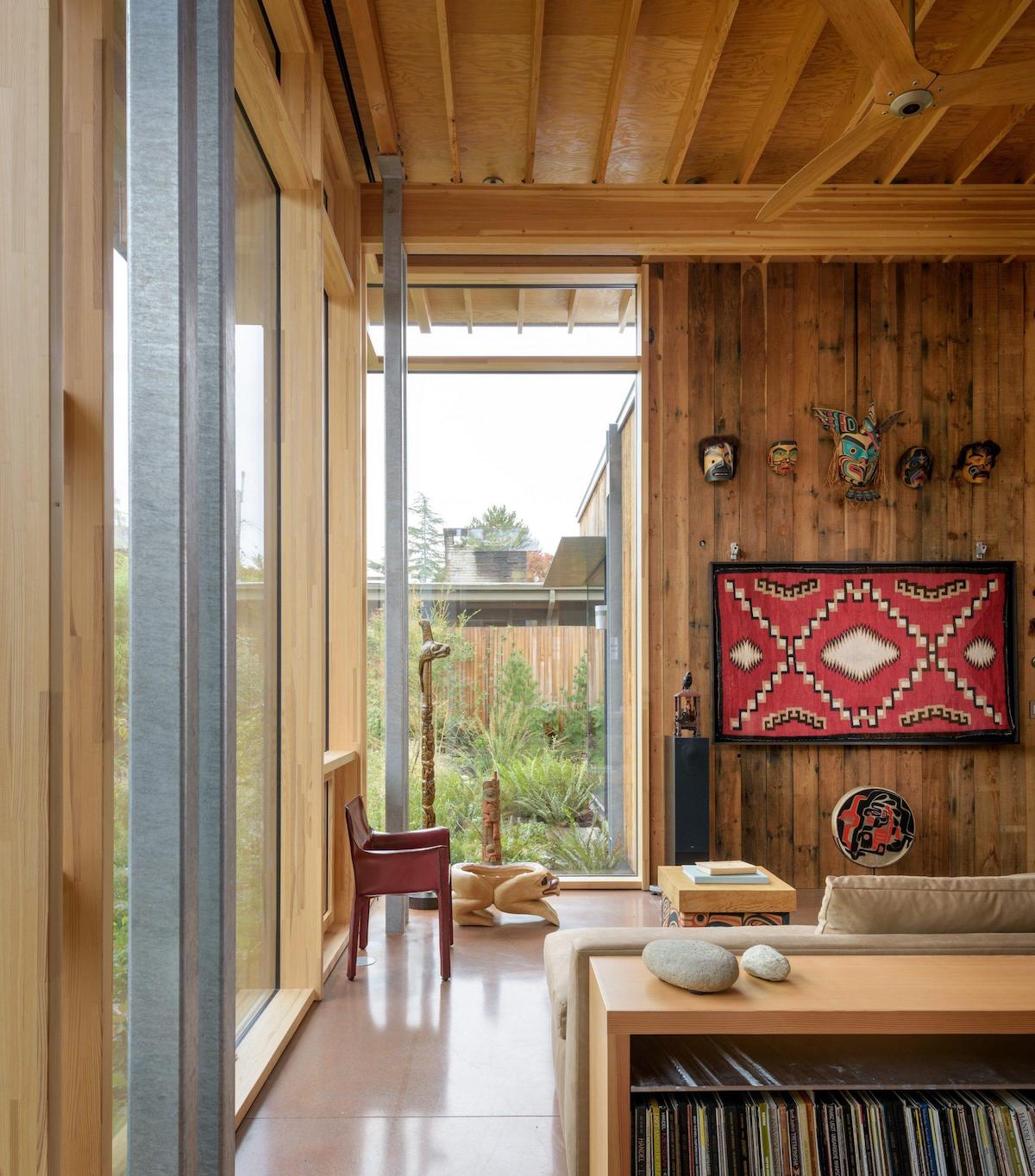
The home is also designed to run on net-zero energy—meaning that it can produce as much energy as it uses.
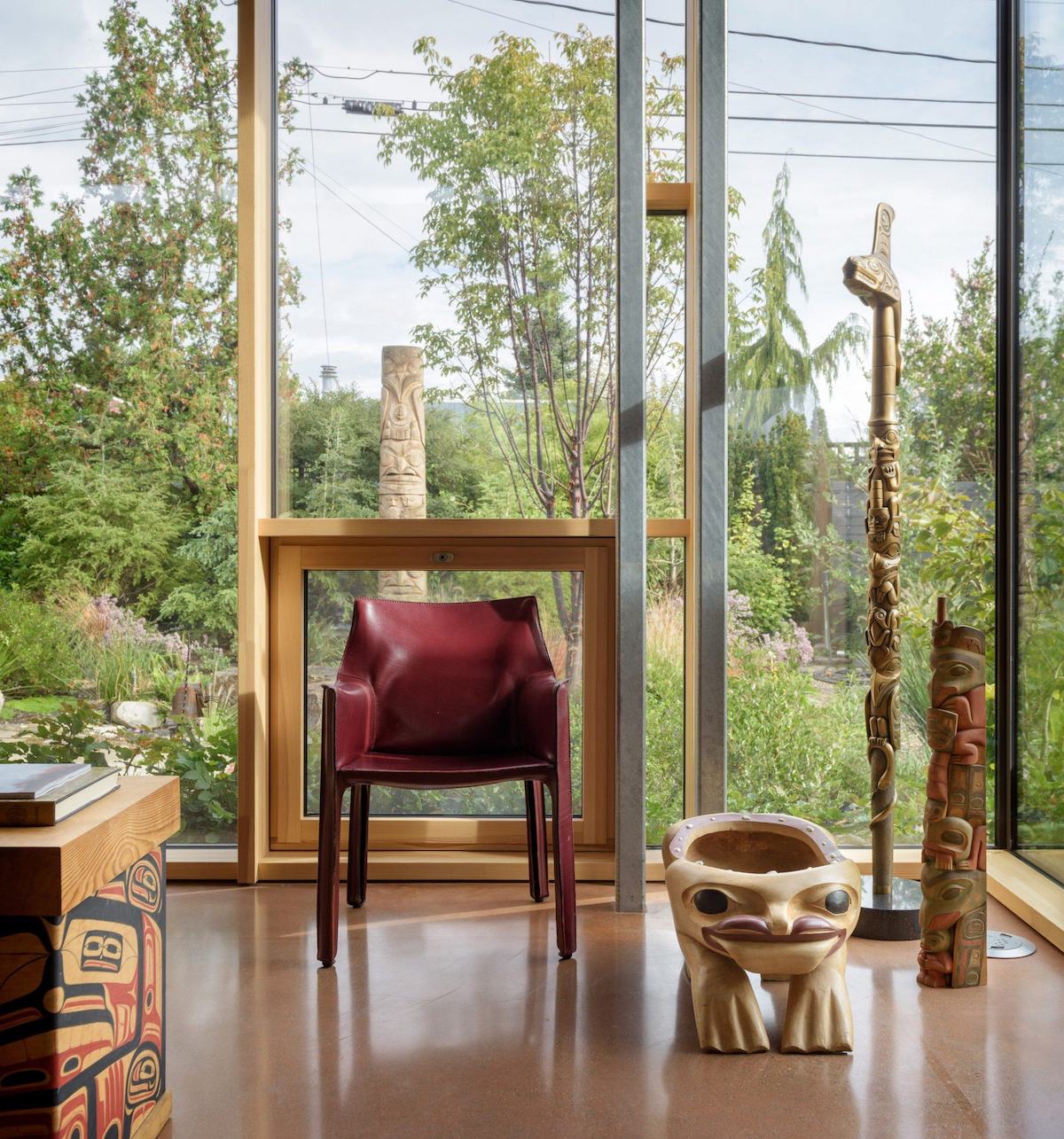
Olson Kundig explains that the interior palette “draws inspiration from the client’s extensive Native American art collection, creating a true Northwest getaway nestled in the heart of the city.”
